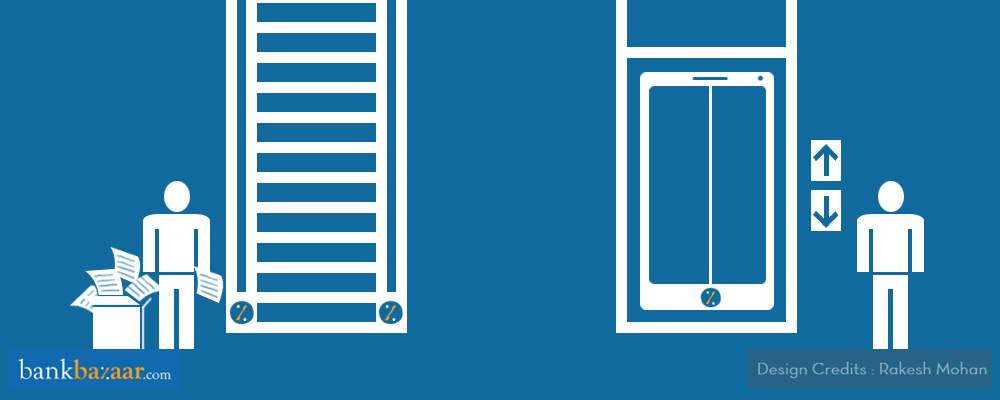
If you have to make a document legally binding, you will need to pay stamp duty charges. Most people who have availed a Home Loan at one time or another will be aware of these charges. However, there is also something called franking. This is done to make a document legal. But, are they both the same? The answer is no.
The difference
Stamp duty is a tax that is levied on legal documents, including those that involve the sale of immovable property. The amount of stamp duty could either be fixed or it could be a percentage of the sale value in the case of property documents.
It is mandatory to pay stamp duty for a legal document and you can be fined if you don’t pay it. Franking, on the other hand, is a process that is used to stamp the legal document. This is the process used to affix any type of mark or stamp to a paper to indicate that the stamp duty has been paid.
Additional Reading: Stamp Duty And Registration At The Time Of Property Purchase
So, while stamp duty is a tax that you pay, franking is the process followed to stamp your papers. Still confused? Let us explain.
You’ve probably seen postal envelopes with stamp denominations many times. Sometimes, instead of actual stamps, you’d find a print that looks like a stamp, but with a denomination on it. This is usually used by the post office for bulk mails (such as magazines) where sticking stamps is time consuming. This is called postal franking.
Franking for documents is very similar. Document franking is a process where an authorised bank or a franking agent will place a stamp on your document. This stamp indicates that all the stamp duties have been paid for that document.
Additional Reading: Why Is Stamp Duty Important?
How does franking work?
In case you want to frank a document, you need to print the agreement on plain paper. Before executing the agreement (signing the papers), you will have to take it to an authorised bank or franking agency. They will provide you with an application form. You will have to fill the form, pay the stamp duty and get a stamp affixed on the document to indicate the amount of stamp duty paid.
For this purpose, a franking machine will be used. This machine uses a special adhesive stamp to affix the stamp on the document. You can sign or execute the document once the franking is done.
Additional Reading: How To Evaluate A Property And Builder Before Buying A House
What are the pros and cons of franking?
The advantage with franking is that it can be done very quickly if you pay the charges and stamp duty using cash or demand draft.
There are several drawbacks if you want to use franking to stamp your documents. Franking agents and banks ask you to pay the franking charges in cash for small amounts and pay order for bigger amounts.
All authorised agents or banks don’t follow the same rules for franking. The rules may vary between states and also from one agent to another within a state.
Franking is available only for limited working hours and only during weekdays. Also, not all bank branches of an authorised bank have franking machines. The most important thing is that each of the authorised banks have something known as a ‘franking quota’.
You might need to inform the bank well before the transaction is made to ensure that you get the benefit of franking.
What are the charges for franking?
Franking charges differ from one state to another. Each state will have its own minimum amount that needs to be paid for franking. While some charge a flat fee, there are others that charge a percentage of the sale value in case of property documents.
However, franking charges are usually only a fraction of stamp duty charges and are sometimes adjusted against stamp duty charges. For example, the minimum franking charge is pegged at 0.1% of the sale value for property documents in Bengaluru.
So, if you decide to buy a house for Rs. 60 lakhs, you will have to pay 0.1% or Rs. 6,000 as franking charges. You can adjust this against the stamp duty that you need to pay. Suppose the stamp duty for the agreement is 4.5%, then, you will have to pay only 4.4%. Note that for simple transactions, the franking charges can be as low as Rs. 50.
Additional Reading: 5 Ways To Raise Your Home Down Payment
Is franking the only way to register a document?
Of course not! You can stamp your paper using franking, e-stamping or you can buy stamped papers or stamp papers. Stamp papers are documents that have been franked or gone through the franking process. The stamp duty that you need to pay will be the cost of the paper. So, you can use these documents to sign and register the agreement.
However, the major drawback here is that stamp papers are not easily available. Also, in certain states, stamp papers are valid only for a certain period. For instance, in Maharashtra, if the stamp paper is not used within six months of purchasing the same, it will be invalid.
So, the best way to get your document stamped is any method that is easy and convenient in your state. You should choose the method based on the rules for that particular agreement. For some transactions, franking might be easy while for others e-stamping might be convenient.
For really small transactions, it is better to purchase stamp papers for small denominations. Ensure that you get the stamp papers from authorised agents only. If you have any doubts, it is best to get a lawyer to help you. In case you are going in for a Home Loan, your bank will help you with the process.